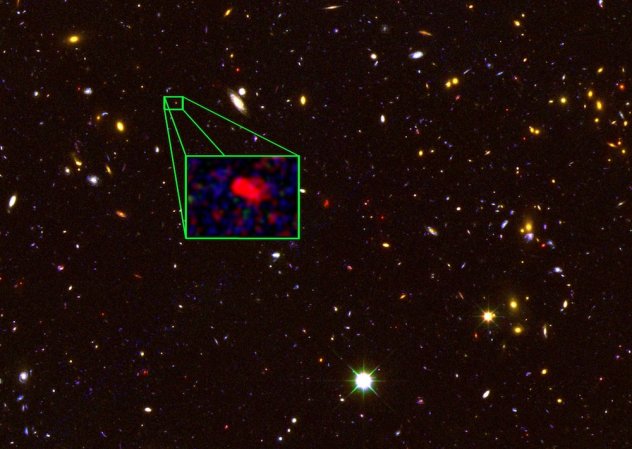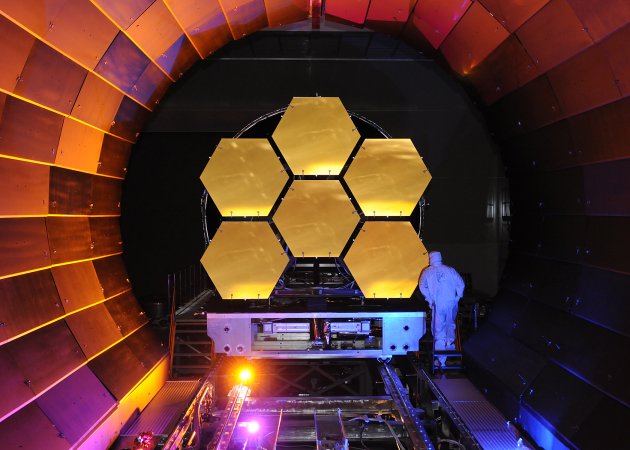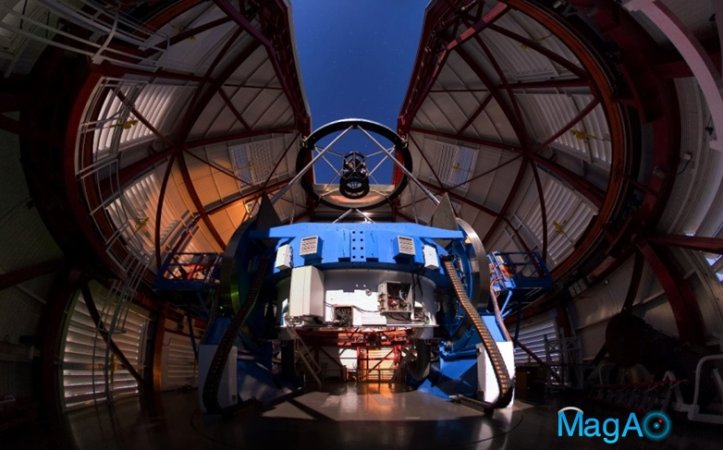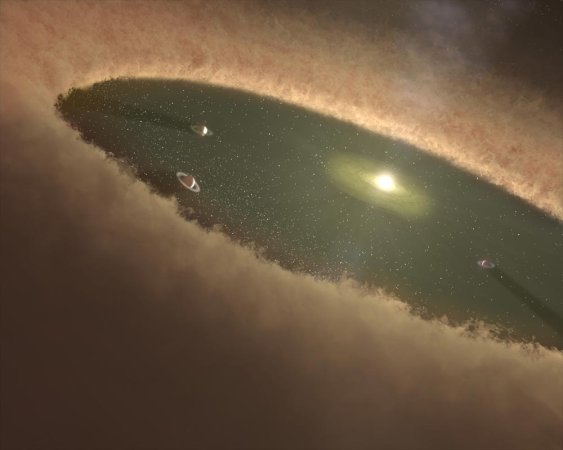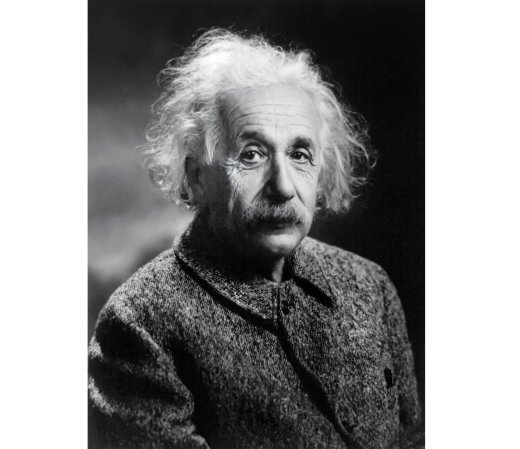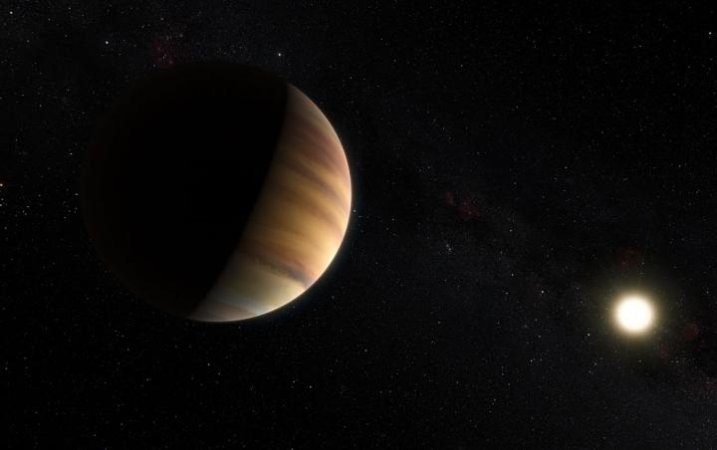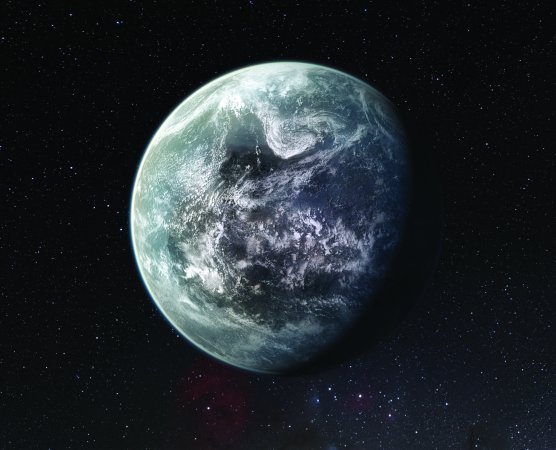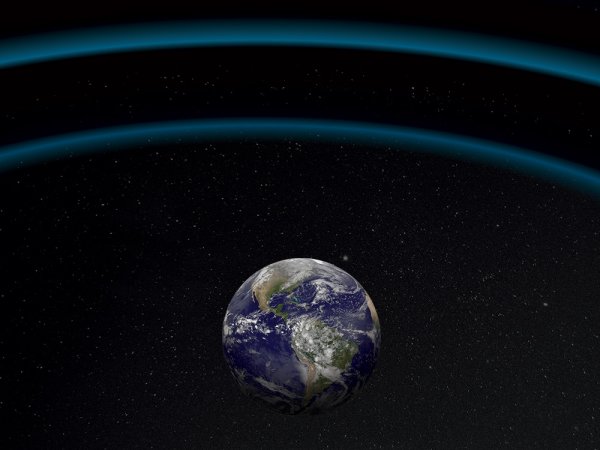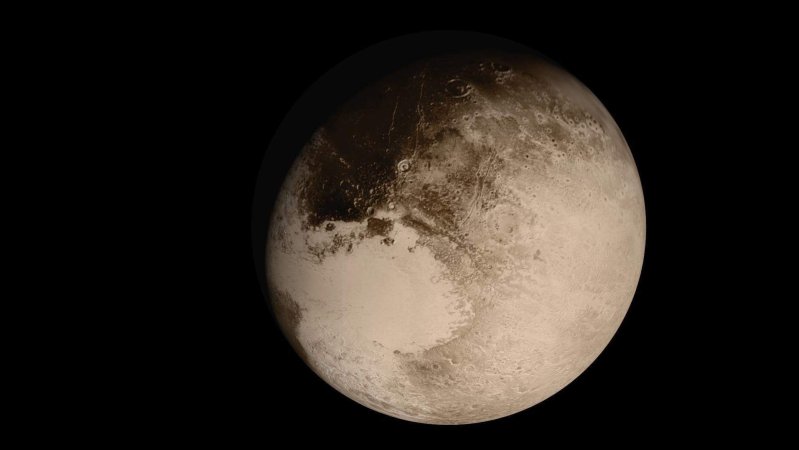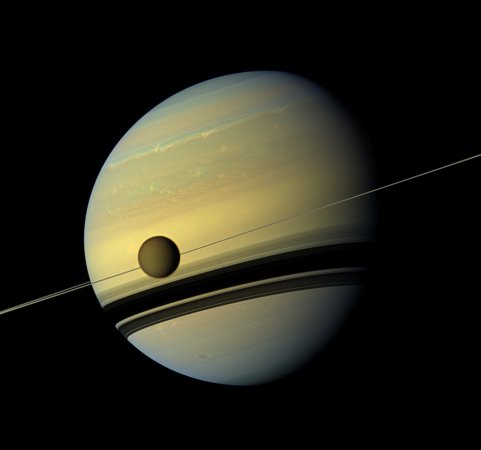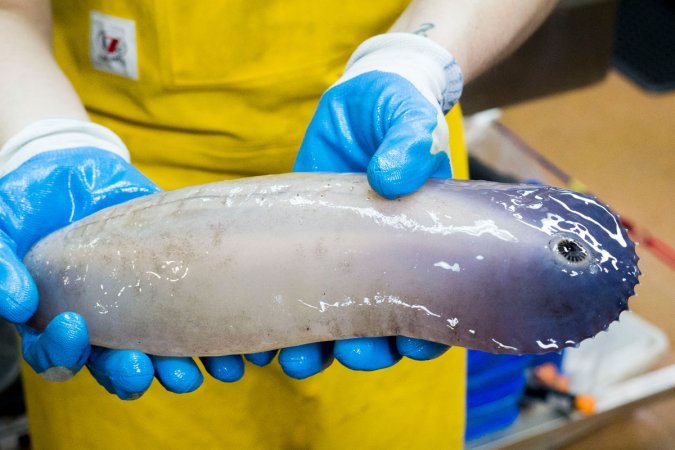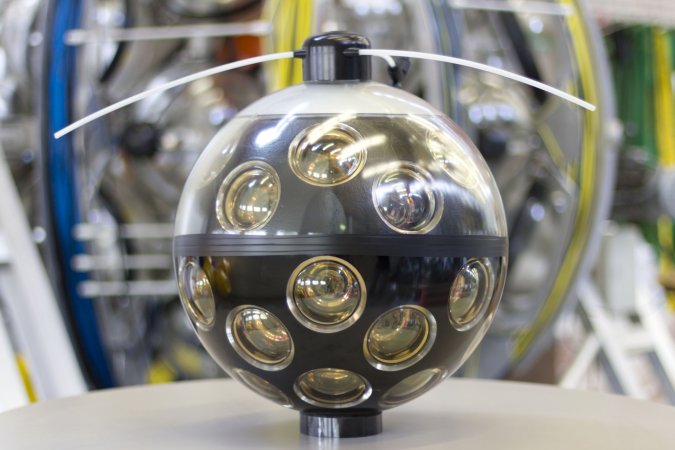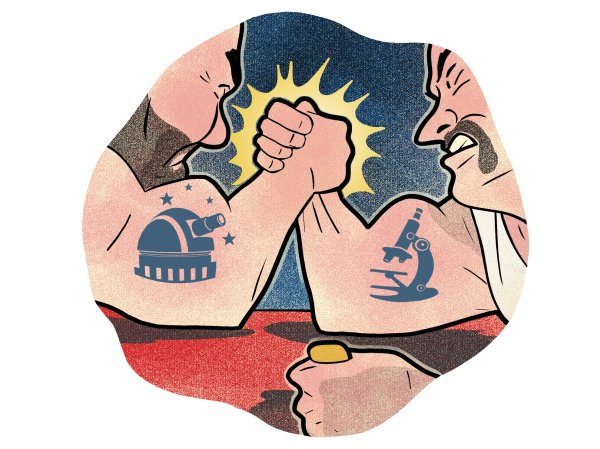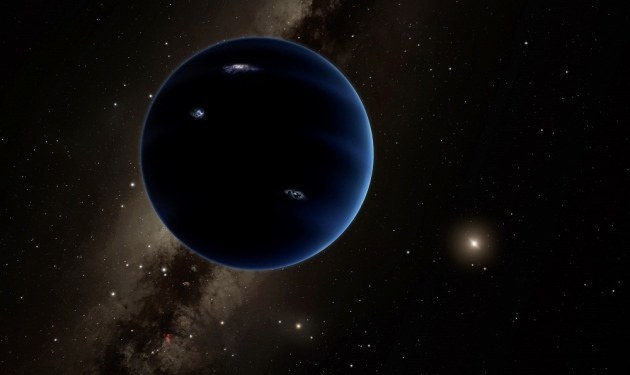

In 1609 Galileo Galilei pointed a telescope with a lens no wider than a cucumber slice to the heavens to decipher the moon’s cratered surface. Since then, telescopes have become invaluable instruments in our understanding of the vast, unexplored cosmos. Observations of the night sky sparked new theories of the Milky Way and other galaxies near and far, and so came better devices to test them with. We’ve come a long way adding larger mirrors, coatings, more refined optics, and blasting telescopes into space.
“Astronomy is one of the older fields of study, but for the vast majority of the history of science, we’ve been limited to what we can see with our eyes in the night sky,” says Caitlin Casey, an astronomer at the University of Texas. “The development of the telescope in the 1600s was really transformative, and it allowed us to peer deeper and deeper into the cosmos. That just led to one mystery after another; there are some answers, but more questions.”
More than four centuries after Galileo peered into the cucumber-thin lens, NASA is scheduled to launch the largest, most powerful, and most hotly anticipated telescope ever put into space. For three decades, the public has gotten used to seeing space through the Earth-orbiting Hubble Space Telescope. Billed as Hubble’s scientific successor, James Webb (which has some controversy behind its naming) will be able to track down light from the universe’s infancy, which we know precious little about.
[Related: A key part of the Big Bang remains troublingly elusive]
“It’s by far the most complex science mission that we’ve done,” says Lee Feinberg, Webb optical telescope element manager at the NASA Goddard Space Flight Center, who has worked on the observatory’s optics for the past two decades.
Fourteen years behind schedule and 20 times over budget, Webb has faced a lot of bumps on its way to the spaceport in Kourou, French Guiana. (The team pushed back the launch date to December 24 last week due to a faulty data cable.) But after more than a thousand scientists, technicians, and engineers from 14 countries overcame the challenges that emerged in its development, the telescope is finally ready to zoom away in search of “first light,” bringing astronomers closer to the Big Bang than ever before.

A giant mirror built for time travel
Milestones in optics and imaging technology have enabled astronomers to observe a great deal of the universe’s history. But when it comes to understanding how it began, details are still murky.
So far, telescopes haven’t allowed us to peer back far enough to see the universe’s first light, which shimmered off the earliest stars that burst into life. Webb, however, is decked out with the latest technology specifically designed to collect and focus on that faint glow.
Size is part of the solution. The orbiting observatory will use a colossal mirror forged from featherweight beryllium—chosen because it holds its shape at extremely cold temperatures. The metal and glass is assembled into a honeycomb shape that spans more then 21 feet across; the 18 hexagonal mirror segments can unfold and are very efficient at collecting light. “Even by ground-based telescope standards, it’s a good-sized telescope,” says Marcia Rieke of the University of Arizona’s Steward Observatory, who has been on the working group for the Webb project since the late 1990s.

Like the Hubble Space Telescope, which has been orbiting Earth for 31 years now, Webb is a Cassegrain reflector-type telescope; it uses a primary mirror to collect light and focus it on a secondary mirror, re-reflecting the energy on its four state-of-the-art instruments, including three ultra-sensitive cameras, to create an image. The larger the mirror’s area, the more light it can collect to document faint objects at greater resolution—think of it like increasing your camera’s aperture, Rieke explains. When astronomers get data back from Webb’s Earth-facing antenna starting in the summer of 2022, they’ll be better images than those taken by Hubble and other existing telescopes in outer space.
Webb is designed to fill in the shoes the senior Hubble telescope’s leaves behind—and then some. Hubble, for instance, can see 13.3 billion years back in time, which is just a little after our universe was formed. Webb, in contrast, will be able to peer even farther back, pulling more than six times as much light and allowing 100 times more magnifying power. Webb also has a 15 times wider field of view on its camera than Hubble. (Meanwhile, Galileo’s scope had such a very narrow field of view that the moon would fill it entirely.)
Seeing the universe in mid-infrared
The James Webb Space Telescope picks up infrared light that is just outside of the part of the spectrum that’s visible to human eyes. There’s a good reason for this: Due to the expansion of the universe, light from distant objects shifts to longer wavelengths at the redder end of the spectrum. What’s more, newly formed stars and planets are hidden behind dust that soaks up visible light. Webb’s infrared gaze will be able to pierce through that dust, revealing what’s behind.
Three of Webb’s four detecting instruments (an imaging camera and two different Near Infrared Spectrographs) cover the whole infrared wavelength range—from 0.6 to 28.8 microns. Rieke helped design the telescope’s Near-Infrared Camera (NIRCam for short) and will be its principal investigator upon its launch. With it, Webb will be able to take clearer images from unexplored corners across the universe, capturing the light of galaxies that are around the same age as the Milky Way.

Webb’s mirrors are also lined with a microscopic layer of gold that reflects infrared light better than nearly any other metal. That puts them at around 98-percent reflective (compared to the typical 85-percent reflectiveness of standard mirrors), which means they can capture almost all incoming photons. “We picked gold for very technical reasons, but it [also] happens to be that it looks very interesting,” Feinberg says.
Essentially, Webb is a heat-detecting telescope, Rieke adds. But to do its job and capture the faintest hints of galaxies, some parts of the telescope need to be exceptionally cold or else all it would see is its own radiation. Webb has a tennis-court-sized sunshield—a five-layer, diamond-shaped structure made of a material called Kapton—that insulates it from solar rays and allows it to cool down to -390 degrees Fahrenheit. At that degree of frigidness, the telescope gives off so little radiation that it no longer interferes with its infrared cameras and sensors.
Though it’s often referred to as Hubble’s successor, Rieke says that Webb is really a bigger and more sensitive sibling to the Spitzer Space Telescope, which also had infrared capabilities. It had to be retired in January 2020 because it flew too far away to send back images to Earth. And they’re both successors to the Infrared Astronomical Satellite, which in 1983, was the first infrared telescope to be sent into space.
Hubble varies in that it mostly captures the same kind of light that humans can see and is only sensitive to a small portion of the infrared spectrum, “Hubble has worked tirelessly to find more and more distant galaxies,” Casey, principal investigator for Webb, says. “But it’s just really limited because it can’t push to longer wavelengths.” And when it does produce images in infrared, they’re often tainted by its own radiation.

Astronomy’s most powerful tool
Webb will be a busy bee once it gets its permanent home almost a million miles out into space.
More than a thousand teams of astronomers from across the globe applied for telescope time during Webb’s first year, but a project by Casey—along with Jeyhan Kartaltepe of the Rochester Institute of Technology—was among the 286 proposals approved for Webb’s first year of observations. Though most groups were given around six observing hours, Casey and Kartaltepe’s research team (consisting of about 50 people spread over the world) was granted 218 hours to conduct the COSMOS-Webb survey, which aims to gather images of half a million young galaxies created soon after the Big Bang. While some surveys look at a portion of sky the size of a pinpoint held at arm’s length, Casey says they’ll be seeing a patch of sky the size of three full moons on an average night.

According to Kartaltepe, they’ll look for bubbles showing where the first pockets of the early universe were reionized—meaning when light from the first stars and galaxies ripped apart hydrogen atoms that ultimately filled up the cosmos. “We call that ‘first light,’ the first stars that were able to emit photons and that were then able to send [those energy particles] to travel through the universe to where we can see them,” Kartaltepe says, adding that the Webb telescope was originally dubbed the “First Light Machine.” Webb will also help map the earliest substances in the universe, including the still-mysterious and elusive dark matter.
Casey and Kartaltepe’s team will ultimately develop a deep field of view by observing nearby patches of sky repeatedly and stitching together broader views of the early cosmic history. Ultimately, they’ll probe star, galaxy, and dark matter distribution and the origins of our universe. The COSMOS-Webb team will also make their data publicly available for other researchers.
[Related: These two galaxies are locked in a cosmic battle]
Because Webb works in the infrared, it will also probe the atmospheres of planets around other stars for molecules like water, methane, and carbon dioxide. The telescope’s Near Infrared Spectrograph can break up light from 100 galaxies at a time into individual wavelengths by using tiny shutters—each about the width of human hair—that only let in the photons from their target and block everything else. The instrument separate light its full spectrum like a prism, which allows researchers to sift through the environments of faraway worlds and understand their potential habitability.
Next stop, space
Now comes one of the more precarious phases in the telescope’s development: the launch from the spaceport in Kourou, French Guiana.

Because the James Webb Space Telescope is so large, the segments had to be folded up like origami to fit inside the 171-by-18 feet Ariane 5 rocket. Unlike Hubble, the Webb telescope won’t sit in low in orbit; once launched into space, it will take about 30 days to travel to its new perch at the depths of the universe before unfurling in a complicated dance to align its mirrors on faraway galaxies. A camera onboard will snap different sequences as the mirrors get into position, so that a team back on Earth can make adjustments in the billionths of a meter. “We need to get it to within a fraction of a wavelength of light in accuracy [in sensors],” Feinberg says, “We’ve been waiting quite a long time to actually do this.” The alignment process will take about six months, after which Webb will begin collecting data.

Webb’s best images will start to appear in mid-2022, but the clock is ticking for the telescope’s highly anticipated voyage. The mission is designed with a five- to 10-year lifetime, and its remote location means that unlike Hubble, it can’t be repaired if anything goes wrong. So, it needs to work flawlessly right out of the box. After that decade of gazing far into the stars, Webb will run out of fuel and essentially become a multi-billion dollar piece of space junk—but not before it changes how we see our place in the universe forever.
“Webb started when I was in grade school,” Casey says. “It’s really phenomenal that as a species that is bound ultimately to the planet that is home, we’re able to peer so far into the cosmos as to see its own beginnings. That’s pretty profound.”





